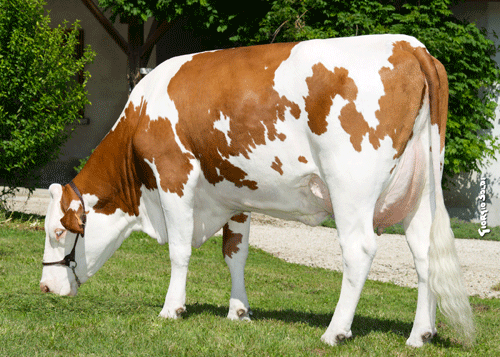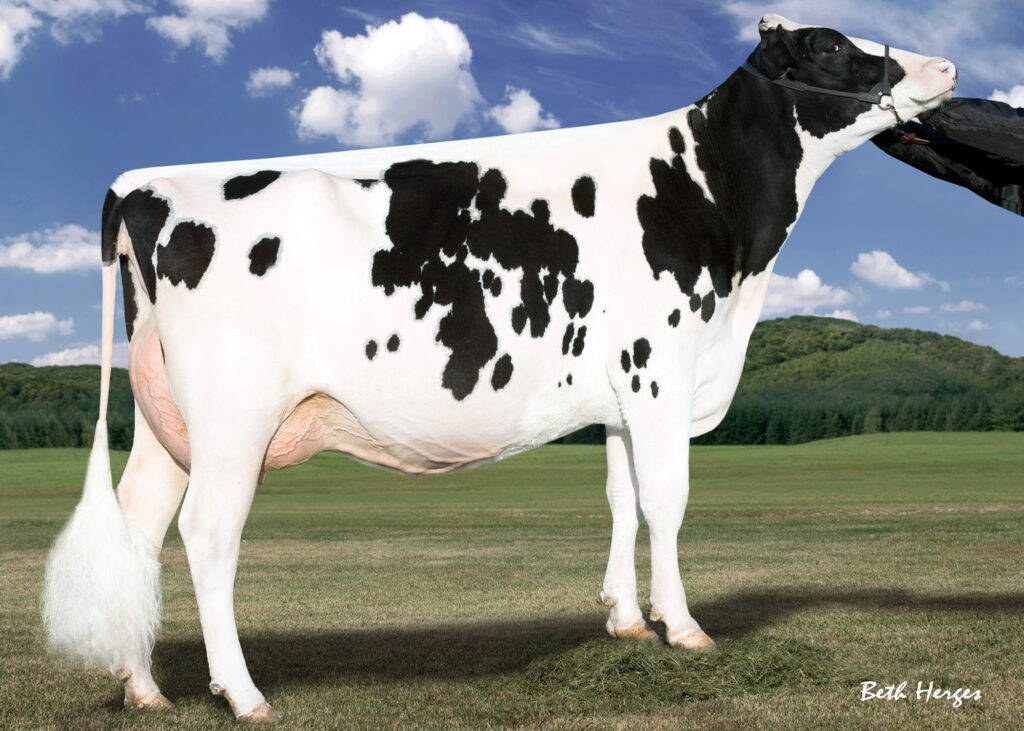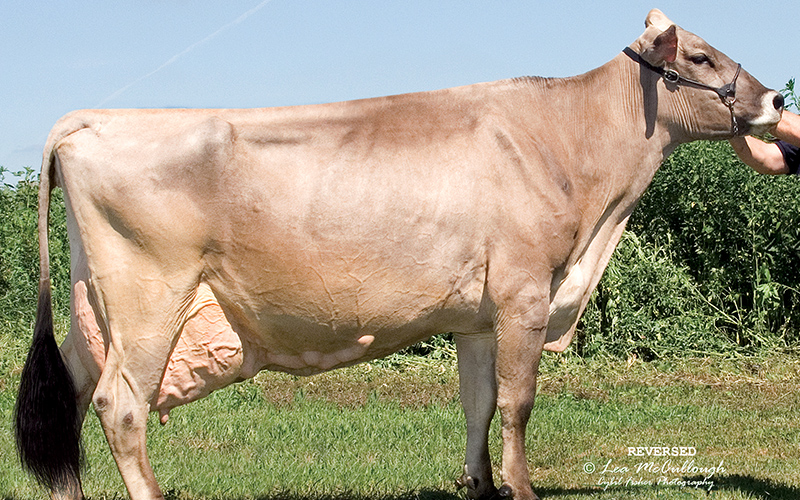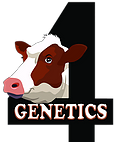Importing Dairy Cattle Breeds

Montbeliarde
Montbeliarde
The Montbeliarde breed has been a very popular choice for cross breeding in North America and Europe in recent years. The breed is the second most popular dairy breed in France and its numbers are continuing to grow, especially with cheese makers.
Montbeliardes are good feed converters and maintain good body condition throughout lactation. The breed has proved very successful as part of a three way crossing programme with Holsteins and Norwegian Reds.
UK proofs are now available for Montbeliardes, which show that this breed is the second highest for milk production, after the Holstein. They are also noted for high protein production combined with low cell counts and good daughter fertility. Montbeliardes develop into big powerful cows with deep bodies, combined with wide chests and rumps and good muscularity. They have very good legs and feet and functional udders, capable of lasting for many lactations.
The breed was initially developed in Eastern France over 100 years ago and is a hardy cow that is capable of performing well in tough conditions, whilst also being able to produce high yields on high input systems.
The Montbeliarde produces high protein milk, low cell counts and good daughter fertility and combines very good legs and feet with functional, long lasting udders.
The mature Montbeliarde cow is comparable in weight to the Holstein, but with more muscularity. There is quite a lot of variation within the breed and the bulls’ linear proofs allow farmers to breed for the type of cow they need. The breed produces a valuable cull cow and bull calf. It is wise to choose an easy calving bull when using Montbeliardes on heifers.
The Montbeliarde has been very popular for crossbreeding in the US and also in the UK and Ireland, where it has worked really well in crossbreeding programmes with the Holstein and a third breed such as the Norwegian Red, Jersey or Friesian.
HOLSTEIN FRIESIAN
Performance: lactation, based on 305 days with a fat content of 4,9% and 4,2% protein:
- 1st lactation – no less than 8.500 kg of milk.
- 2nd lactation – no less than 9.500 kg of milk.
- 3rd or subsequent lactation – no less than 10.000 kg of milk.
| Age: | 18-30 months on the day of delivery. |
| Weight: | 400-550 kg depending on the age and stage of pregnancy at the time of dispatch. |
| Pregnancy: | 3-7 months before the date, confirmed by results of the inspection veterinarian. |
| Stud Book: | All animals are registered in the official stud book, accompanied by a certificate of pedigree, which shows the last 3 generations. |

FLECKVIEH CATTLE BREED
The Fleckvieh cattle breed originated in central Europe as a dual-purpose strain of Simmental cattle. They were rigorously selected, not only for providing beef, but also milk production. The breed history dates back to the 1830’s.
FULLBLOOD FLECKVIEH CATTLE OF TODAY
Modern Fullblood Fleckvieh Simmental cattle are the most universal breed in the world. They offer much needed economically relevant traits to the gene pool of beef cattle today:
- Increased heterosis
- Increased maternal traits
- Increased growth
- Calving ease and calf vigor
- Moderate frame and easy fleshing
- Excellent fertility
- Superb longevity
- Polled and horned genetics
- Diverse genetic pool
- Highly environmentally adaptable
- No known genetic defects
- Dedicated progressive breeders
- Ideal foundation for Simbrah
FLECKVIEH CATTLE BREED
The Fleckvieh cattle breed originated in central Europe as a dual-purpose strain of Simmental cattle. They were rigorously selected, not only for providing beef, but also milk production. The breed history dates back to the 1830’s.
FULLBLOOD FLECKVIEH CATTLE OF TODAY
Modern Fullblood Fleckvieh Simmental cattle are the most universal breed in the world. They offer much needed economically relevant traits to the gene pool of beef cattle today:
- Increased heterosis
- Increased maternal traits
- Increased growth
- Calving ease and calf vigor
- Moderate frame and easy fleshing
- Excellent fertility
- Superb longevity
- Polled and horned genetics
- Diverse genetic pool
- Highly environmentally adaptable
- No known genetic defects
- Dedicated progressive breeders
- Ideal foundation for Simbrah

Brown Swiss (BS)
is versatile and suitable for different production systems. BS efficiently utilizes forage to produce high-quality milk. Brown Swiss milk is particularly suitable for cheese production thanks to its high kappa-casein B content. Thanks to this quality, it contributes to the good reputation of Braunvieh as a cheese breed. This is because the kappa-casein BB in the milk offers a higher yield of cheese than AA milk.
Brown Swiss milk is rich in fat. This is essential for the taste of milk and cheese. Brown Swiss milk is especially known for its high protein content. The ratio of fat to protein must be equal to or higher than 1.15 for good cheesemaking. With a ratio of 1.22, Brown Swiss positions itself in the leading trio in France, for example.
Is Brown Swiss milk more digestible?
Beta-casein makes up 30% of milk protein and also includes two types: A1 and A2. Some scientific studies highlight the following fact: A2 milk is easier to digest, while A1 milk is harder to digest. It could possibly even be responsible for milk intolerance. In many countries – including Switzerland – A2 milk is already available on the market. The proportion of A2 milk in Brown Swiss milk is very high.
